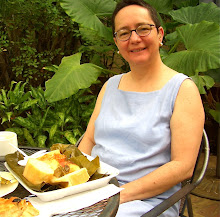So many artists of Nicaragua struggle (and succeed) in painting their love for their country. The history of contemporary Nicaraguan art, in particular, painting, has been similar to other Latin countries, in that much of the 19th and 20th century artists were most influenced by the styles, genres and movements of Europe. The art schools in Latin America often imported masters from Europe or hired local artists who had been classically trained in France or Italy. In the mid to late 20th century, many Nicaraguan artists were struggling to define a national artistic identity that was based upon their own cultural, social, political, and geographic experiences and conditions, in effect rejecting the European- centered identity that had formed the artistic environment to this point.
Modern art in Nicaragua was spurred by the Nicaraguan artist Rodrigo Penalba (1908-1979), when he returned in 1948 from training in Europe. He was appointed the Director of the Escuela Nacional de Bellas Artes, and became the teacher, mentor and motivator of several generations of Nicaraguan artists. Penalba’s influence encouraged his students to experiment in the expression of cultural identity through painting. Penalba is generally acknowledged as the father of the modern art movement in Nicaragua.
In the early 1960’s, a new force began to develop, led by a group of young artists who were driven by the desire to create a national artistic and cultural movement. This group formed Praxis, an avant-garde community of artists that addressed the intellectual and cultural issues of national identity and the creation of art. Praxis was headed by painter Alejandro Arostegui, writer Cesar Izquierdo and Amaru Barahona. They began the publication of a magazine, held lectures and conferences, offered painting and drawing courses, and organized exhibitions. With their first exhibition in 1963, Praxis initiated a national artistic movement.
In her monograph, “Patria: Contemporary Nicaraguan Painting” (Duke University Museum of Art, 1995), Sofia Lacayo describes this exhibition organized by Praxis.
“The major artistic tendency at the exhibition was what has been called the “pathetic” – an expression in both abstract and figurative form of concepts of solitude and alienation. Reacting to the condition of Nicaragua, their work rebelled against human suffering caused by oppressive government and addressed the need for social change. Their work became a symbol of insubordination to the Somoza dynasty.” (page 7)
The Praxis group became an important network for the developing visual arts community for the next 40 years. It is still active, although many additional trends have influenced the Nicaraguan art scene over the years.
The painting above, by Rudolpho Arellano of Solentiname, symbolizes Nicaragua as a beautiful woman. When I visited Sr. Arellano in 2006, and purchased the painting, he explained that this painting was a visualization incorporating many aspects of Nicaragua's beauty and history. The jar on the woman's head is adorned with a flowing river, a reference to the historical hopes for a canal linking the Atlantic and the Pacific Oceans. The water and fishermen in the background refer to the livelihood of many Nicaraguans still, and the many lush trees and flowers, and animals and birds, represent the glorious flora and fauna of Nicaragua. Out of the pot on the woman's head, flow flowers of all varieties, representing the hopes for the future of the country. The woman herself is looking toward the future, unafraid and optimistic.

No comments:
Post a Comment